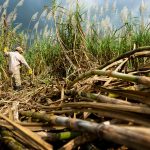
Europe’s EPR: How the EU is harmonising packaging regulation
How does Europe regulate its packaging?
(Getty Images)
As the UK’s EPR comes into force, the EU is harmonising its own schemesOn April 1, the UK’s Extended Producer Responsibility (EPR) regulations came into effect. The wide-reaching regulations aim to ensure that businesses collect data on packaging they supply or import.
The regulation’s purpose is to put the cost of managing and recycling packaging onto producers themselves, according to the Food and Drink Federation (FDF). It also aims to increase recycling and reduce ‘excessive’ packaging.
Meanwhile, across the English Channel, the EU is trying to harmonise its own member states’ packaging rules. This harmonisation includes new regulations on member states’ EPRs.
The UKThe UK’s EPR scheme requires companies to collect and report data on packaging they supply or import. They are responsible for the net costs of both managing and recycling the packaging they produce, through a series of fees.
The scope of the regulation covers businesses with a UK presence that have £1m (€1.2m) annual turnover or more. Companies must also have been responsible for importing or supplying more than 25 tonnes of packaging into the UK market over the previous calendar year.
The EUFrom 1994, EU countries were regulated by the Packaging and Packaging Waste Directive (PPWD). As a directive, the PPWD ensured that EU member states pass their own EPR schemes into law.
However, the recent entering into force of the Packaging and Packaging Waste Regulation (PPWR) changes all this. It means that the EU is taking matters into its own hands.
Entering into force on February 11 this year, the regulation’s date of application is 18 months following this.
The regulation aims to minimise waste generated, especially through primary raw materials, and accelerate the transition to a circular economy. The eventual aim is to make all packaging in the EU recyclable in an economically viable way by 2030.
Among other things, the regulation aims to harmonise the criteria for EPR schemes across Europe. Different rules on a national level can create uncertainty for manufacturers, according to the regulation.
Measures taken by the producer should allow for the return and waste management of all packaging waste, free of charge for consumers, the regulation states.
Under the regulation, producers must pay for the costs of labelling waste receptacles as well as the costs of carrying out surveys of collected waste.
The fee itself should be modulated according to the percentage of recycled content in packaging, the regulation states. A framework for the modulation of the fee will be adopted by 2028.
The packaging included within an EPR scheme should be identifiable by a symbol or QR code, according to the regulation.
Producers will need to submit their details to a national register which each member state will have and which will monitor producer compliance with EPR requirements.
To ease administrative burdens for small businesses that fill imported packaging, the regulation stresses that by ‘producer’ it means the company that first made said packaging available in that member state.











